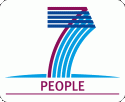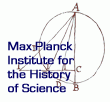Books on Travel, Geography, and Navigation
Ximenez's interest in the early modern colonial world, which the Portuguese helped shape, is also reflected in his book holdings. Interestingly, these included a fair number of books related to more recent voyages that had challenged Portuguese dominion over maritime trade. Several of these books were printed in Amsterdam, which at the turn of the seventeenth century, emerged as the new center for cartographical, geographical, and navigational knowledge. Specializing in travel literature, seamen's guides, atlases, and maps, Cornelis Claesz was the most active publisher in Amsterdam's competitive book market up to his death in 1609; he frequently traded with Jan Moretus and other publishers in Antwerp.
Ximenez's library contained several travel books published by Cornelis Claesz. These included both a Dutch and a French edition of Willem Lodewijcksz's account of Cornelis de Houtman's first voyage to the East Indies, listed in the inventory as "Reyse van de Hollanders naer Oost-Indiën" and "Histoire du voyage des Hollandois en Oostinde" respectively; and the 1598 account of the voyages of circumnavigation by Thomas Cavendish, Francis Drake, and John Hawkins to West India ("Zeereysen van Thomas Candisch, Draec ende sir Jehan Houkens near West-Indiën"). Ximenez also owned the 1599 Latin edition of Jan Huyghen van Linschoten's Navigatio ac itinerarium in orientalem sive Lusitanorum Indiam, published by Aelbert Hendricksz in The Hague in collaboration with Cornelis Claesz; and the 1598 Dutch edition of the Description of the Entire Coast of Guinea, Manicongo, Angola ("Der Hollanders reyse naer Guinea, 1598").
Listed in the inventory are further two highly successful pilot guides, both originally published by the Leiden branch of the Plantin press, but issued in subsequent editions by Claesz: the 1601 edition of the Spieghel der zeevaert van de navigatie der westersche zee (Marrinor's mirror of the navigation of the Atlantic), a compilation of texts and sea charts by Lucas Janszoon Waghenaer of Enkhuizen; and the 1596 French edition of the Caert-thresoor, inhoudende de tafelen des gantsche werelts landen. All these books were lavishly furnished with cartographical, geographical, botanical, zoological, and ethnographic illustrations, which claimed to have been made "from life" and would have delighted a reader experienced in trading with many parts of the world.
From the account books of the Plantin press we know that Emmanuel Ximenez, like other Italian, Spanish, and Portuguese merchants residing in Antwerp, had purchased a number of volumes of the De Bry America or India Occidentalis series in 1599; the 1617 inventory lists three volumes of the 1609 Latin edition of the America series. He also owned a copy of Balthasar Lydius's Novus orbis, id est, Navigationes primae in Americam, published in Rotterdam in 1616, which includes accounts of the great travels made by Europeans to the Americas including Christophorus Columbus, Amerigo Vespucci, Peter Martyr, Hernando Cortés, Nicholas Herborn, and Gaspar Barreiros. Ximenez's curiosity was vast and also embraced the world of northern antiquarianism. For example, he owned the Icelandic scholar Arngrímur Jónsson's Brevis commentarius de Islandia (Brief Commentary on Iceland), published in Copenhagen in 1593. Arngrímur was interested in runes and a regular correspondent of Ole Worm.
Among the older literature Emmanuel owned (and which he perhaps also inherited from his uncle Fernão) was the 1554 Antwerp edition of the Parte primera de la Chrónica del Perú by Cieza de Léon, the first account on the customs and cities of the peoples of the Andes. The inventory also lists Richard Eden's 1561 English translation of Martín Cortés's The Arte of Navigation, which soon became a foundational manual in the English literature on navigation.
Noteworthy among the books written in Portuguese are collections of Jesuit letters sent from Japan and China. These include the two-volume 1598 edition of the so-called 'Japan letters' ("Cartas que os padres de Jesus scriven de Japao et China"), the greatest of all collections, published on behest of the Portuguese Archbishop Dom Theotonio de Braganza at Evora; and what seems to be the 1593 Lisbon edition of the Cartas do Iapam.
Ximenez's library also included the 1610 Antwerp edition of Pedro Teixeira's remarkable account of his travels in Hormuz (Persia) and Malacca (Malaysia), which also includes an account of the dynasties of Hormuz and Persia (Relaciones [...] d'el origen, descendencia y succession de los Reyes de Persia, y Harmuz, y de un viage hecho [...] dende la India Oriental hasta Italia por tierra). Fluent in Persian, Arabic, and Turkish, the learned Portuguese converso merchant offered detailed descriptions of caravan routes, waterways, and pilgrimage sites and was particularly interested in the medicinal properties of local food commodities. On his return, he settled with his family in Antwerp. The Teixeiras were trading partners of the Ximenezes, and Pedro must have been personally known to Emmanuel.
Mentioned among the manuscripts is the following title: "Lues o jeda jornada d'Affrica del Rey Dom Sebastian." This could refer to a copy of Jerónimo de Mendonça's chronicle Jornada de Africa. Depoimentos de contemporaneous de D. Sebastião sobre este mesmo rei e sua jornada de Ãfrica (Journey to Africa: Statements by King Sebastian's Contemporaries about this King and his Journey to Africa), published in Lisbon in 1607; or of Juan Bautista de Morales's Jornada de Africa del Rey Don Sebastian de Portugal, published in Seville in 1622. Obsessed with the military conquest and Christianization of Africa, King Sebastian of Portugal died in the battle of Alcazarquivir of 1578 and subsequently became the protagonist of numerous treatises and plays, and was thus a well-known figure in early seventeenth-century literary culture.
All of these books, coupled with the presence in the Meir house of maps, globes, a telescope, and other mathematical instruments, indicate that Ximenez had a strong and active interest in long-distance travel and the technical aspects of its planning and execution, as well as in the history, geography, and natural resources of foreign parts of the world that formed part of his extended network of trade relations. From the few facts we know about his life, we cannot say whether he visited some of these places himself, and thus knew them first-hand, or whether he had only travelled there in his imagination, using information gathered from his agents and middlemen and, of course, his extensive library.
Literature
Lesger, Clé. "The Printing Press and the Rise of the Amsterdam Information Exchange around 1600." Cross-regional Chains in Global History. Europe-Asia Interface Through Commodity and Information Flows: Proceedings of Global History Workshop, Osaka 14th-16th December 2007. Ed. Shigeru Akita. Osaka: Osaka University Press, 2008.
Meeus, Hubert. "Jan Moretus en de noordnederlandse boekhandel, 1590-1610." Ex Officina Plantiniana Moretorum: Studies over het drukkergeslacht Moretus, ed. Francine de Neve and Marcus de Schepper. Antwerp: Vereeniging der Antwerpsche bibliophielen, 1996. 343-369.
Ooghe, Bart. "The Rediscovery of Babylonia: European Travellers and the Development of Knowledge on Lower Mesopotamia, Sixteenth to Early Nineteenth Century." Journal of the Royal Asiatic Society 17.3 (2007): 231-252.
Sutton, Elizabeth A. Early Modern Dutch Prints of Africa. Farnham: Ashgate, 2012.
Van Groesen, Michiel. The Representations of the Overseas World in the De Bry Collection of Voyages (1590-1634). Leiden & Bosten: Brill, 2008.


